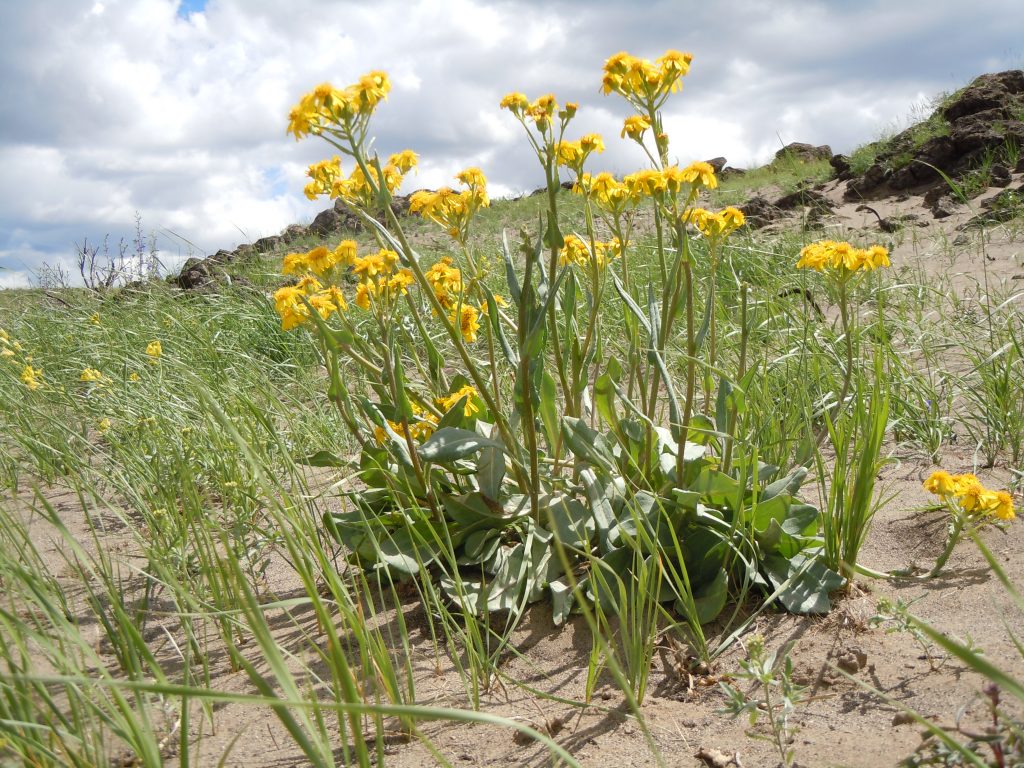
Native to grassland, shrublands, and forests of western and central North American this herbaceous biennial or perennial is a member of the aster family, Asteraceae, that also includes daisy, yarrow, and lettuce. The plants grow 8-30″ tall and have thick stalked basal leaves and a one or more erect, hairy, unbranched stems bearing leaves and clusters of flowerheads. The lanceolate to oblong leaves are 3-9.5″ long, have entire margins, and are covered with dense cobwebby hairs when young but become smooth by flowering times. Dense, rounded to flat-topped clusters of 6-20 stalked flowerheads appear in the upper leaf axils from late spring to early summer. Each flowerhead is 1/2-3/4″ across and consists of a central yellow disk surrounded by 8-13 yellow to white ray flowers. Like the stem and leaves, the flowerheads and their stalks are covered with cobwebby hairs that fall off with maturity. The fruit is an achene ( dry, one seeded fruit) with a tuft of white hair Lambstongue ragwort is especially attractive in a meadow garden with dwarf larkspur and attracts pollinators including bumblebees, but is toxic to livestock. The genus name, Senecio, comes from the Latin word senes meaning old man, and refers to the silvery, bristly hairs at the apex of the seeds. The specific epithet, integerrimus, is the superlative form of the Latin adjective integer, meaning completely entire or unbroken, and refers to either the leaf margins or compact cluster of flowers.
Type: Herbaceous biennial or perennial
Bloom: Clusters of yellow flowerheads from late spring to early summer
Size: 8-30″ depending primarily on soil moisture
Light: Sun to part shade
Soil: Average, wet to dry
Hardiness: Zones 7-10
Care: Low maintenance
Pests and Diseases: None of significanc
Propagation: Seed
Companion Plants: Dwarf larkspur, slender woodstar
Common Varieites:
Var. ochroleucus (white ray flowers, cream disk)
Var. exaltatus ( no ray flowers, creamy disk)
Photo Credit: Matt Lavin Wikimedia